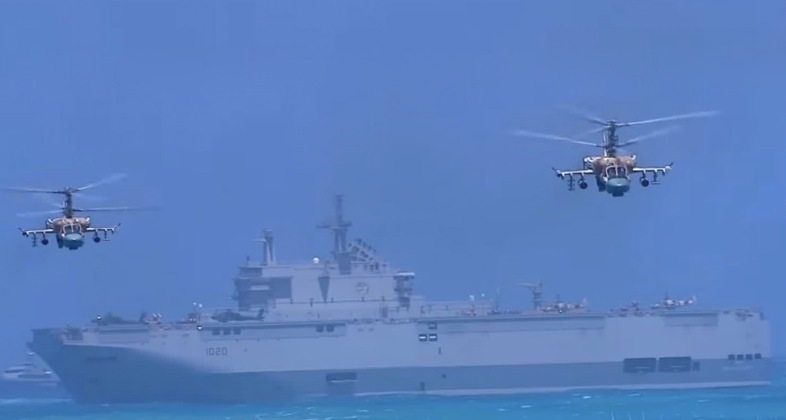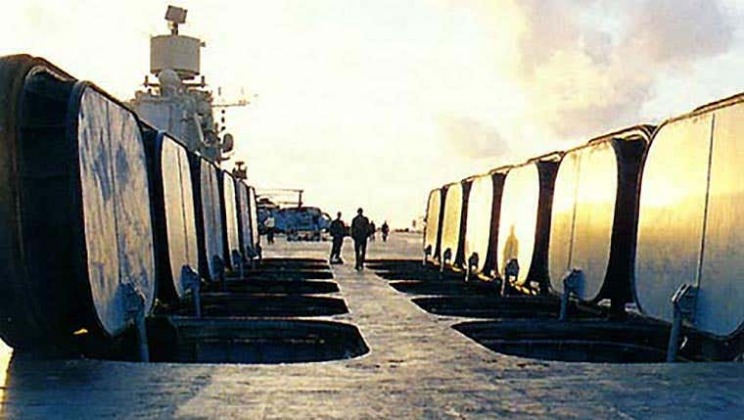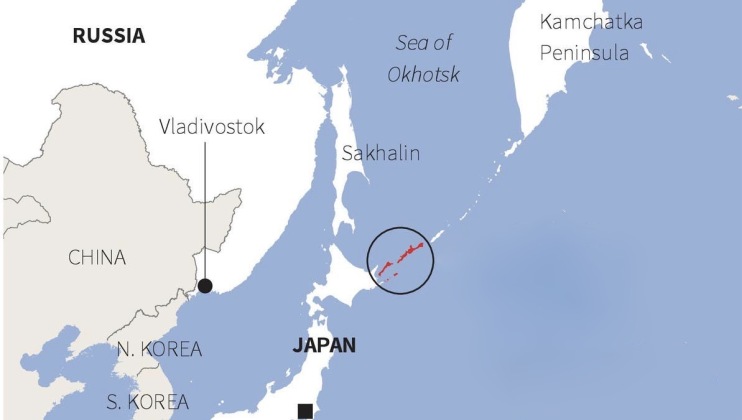News
Unlikely as it Sounds Russia Will Field Three Carriers By 2030: Here is Where They Will Likely Be Deployed
Following the announcement that the Russian Navy’s sole aircraft carrier the Admiral Kuznetsov had returned to dry dock after three years, speculation regarding the ship’s possible early retirement was largely dispelled with the vessel expected to continue to serve in the Russian Navy for well over a decade after refurbishment and modernisation are complete. Whether the outbreak of war in Ukraine in February and subsequent fast worsening of tensions with NATO, which has been accompanied by a rapid growth in state revenues as a result of high oil prices, may have changed the Russian Defence Ministry’s plans for the warship, remains uncertain. Among the upgrades expected are new electronics and sensors, a complete overhaul of propulsion systems, and possibly integration of new close in weapons systems and of Zicron hypersonic cruise missiles to replace the ageing Soviet P-700. Alongside the Kuznetsov, which is likely to return to service by 2024, the Russian Navy is also set to receive two new lighter carriers around the middle of the decade which are currently under construction in Crimea. Set to be named the Sevastopol and the Vladivostok, estimates for the ships’ displacements have ranged from 25,000 to over 40,000 tons. Serving as assault ships, they will deploy Ka-52 attack helicopters as their primary combat aircraft and may also deploy vertical landing capable fighters that have been reported from the late 2010s to be under development.

While Russia has not invested in producing cruiser or destroyer sizes ships since the collapse of the Soviet Union, the commissioning of two new carriers to accompany the Admiral Kuznetsov would provide a sizeable fleet for power projection operations – albeit one limited by the range of escorts and logistical assets available. With work to modernise the Kuznetsov underway, and with both assault carriers having been laid down in 2020, there is little question that all three will be in service sometime in the second half of the decade. It remains uncertain, however, both how capable the warships will be, with outstanding questions from whether the lighter ships will deploy fighters to whether the Kuznetsov will receive the Navy’s latest Zicron missiles. Furthermore, the fleets the ships will be deployed under and whether they will rely on newer but shorter ranged frigates or heavier but much older destroyers and cruisers for their escorts remains uncertain.

The Russian Navy is currently divided between four fleets and a single flotilla, none of which have open access to the Ocean. Where the Caspian Flotilla can be ruled out entirely due to its isolation and very small size, the Black Sea Fleet and Baltic Fleet also remain unlikely to receive carriers for multiple reasons. Both remain largely bottled in by the territories of neighbouring NATO member states, and their more confined environments are better suited to deployments of frigates, corvettes and coastal defence systems such as the Bastion. The small size of both maritime theatres means that carriers will be of only limited use, being vulnerable to strikes and eclipsed in their potential usefulness by the capabilities of shore based aircraft which have both seas comfortably within their ranges. Thus it is likely that carrier deployments will be focused in what are arguably the Russian Navy’s two most strategically critical fleets – the Pacific Fleet and the Northern Fleet.

The Russian Navy was previously set to receive two assault carriers in the mid-2010s, namely Mistral Class ships built in France which were to be supplemented by two larger ships jointly built by the two countries in Russian shipyards. These were to be concentrated in the Pacific around the heavily fortified Kuril Islands which are currently claimed by Japan. The growing importance of the Arctic Fleet, as Russia has moved to rapidly reinforce its positions in the region in the face of a fast growing NATO military presence, has led to the possibility of commissioning carriers optimised for Arctic operations being raised in the past. Both fleets operate in larger theatres where there is a need for maritime power projection capabilities, in the Arctic particularly from assault ships and helicopters and in the Pacific from both kinds of carrier. Deployments of Russia’s three carrier warships could thus be made accordingly, with facilities constructed to accommodate Mistral Class ships in the Pacific but later abandoned when the sale was cancelled potentially being used to accommodate Russian built carriers in the theatre.
A further notable benefit of deploying the Admiral Kuznetsov to East Asia would be that the ship could deploy alongside its Chinese built sister vessels the Liaoning and Shandong, which are based on the same basic design but are significantly more advanced. The Admiral Kuznetsov could even potentially deploy for maintenance to Chinese shipyards and make regular port visits, which may be key to making its operations viable should Russia’s own defence sector continue to struggle with the ship. The possibility of the ship benefitting considerably from Chinese support in its ongoing refurbishment and modernisation, as Chinese shipbuilders have considerably more experience with the Kuznetsov design and its modernisation, has also been speculated.












